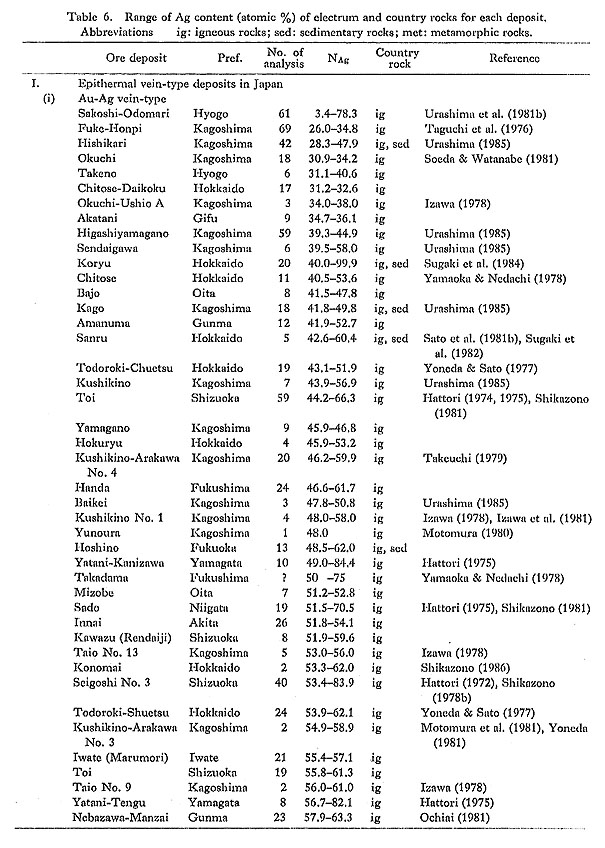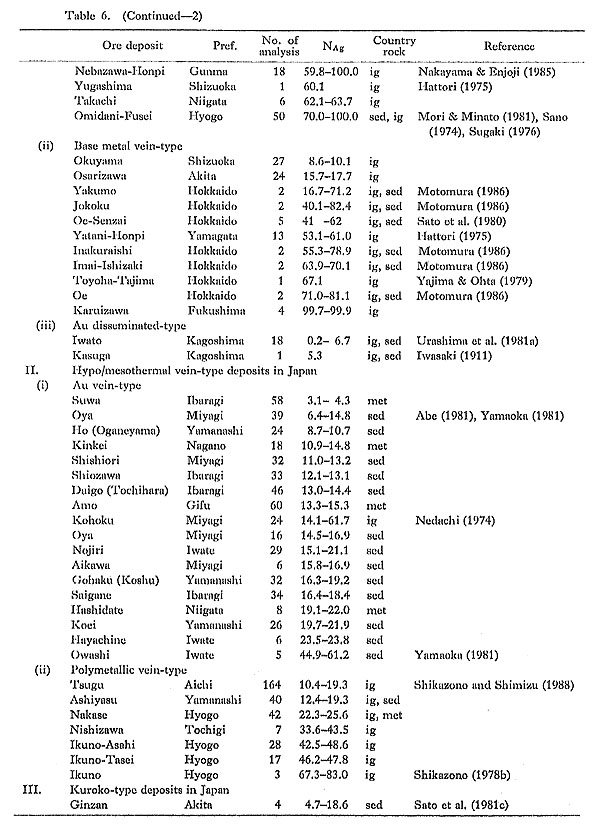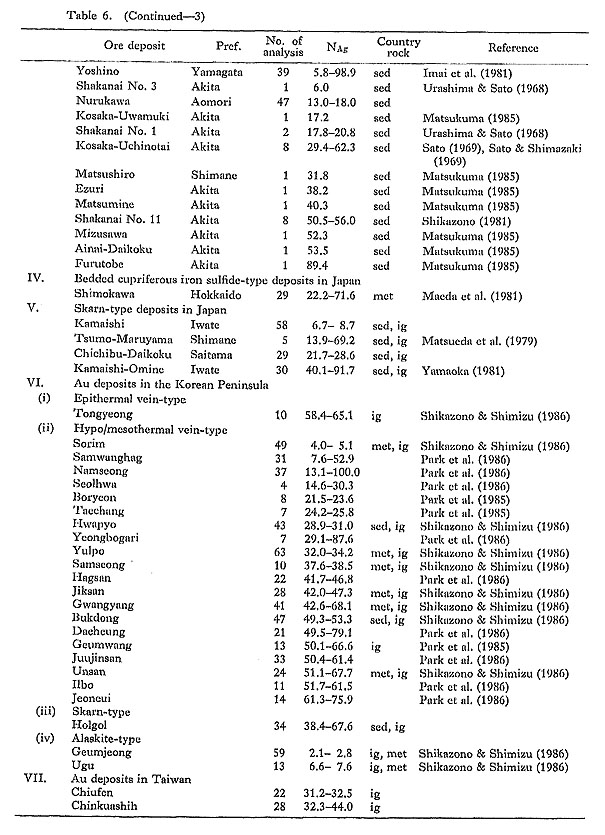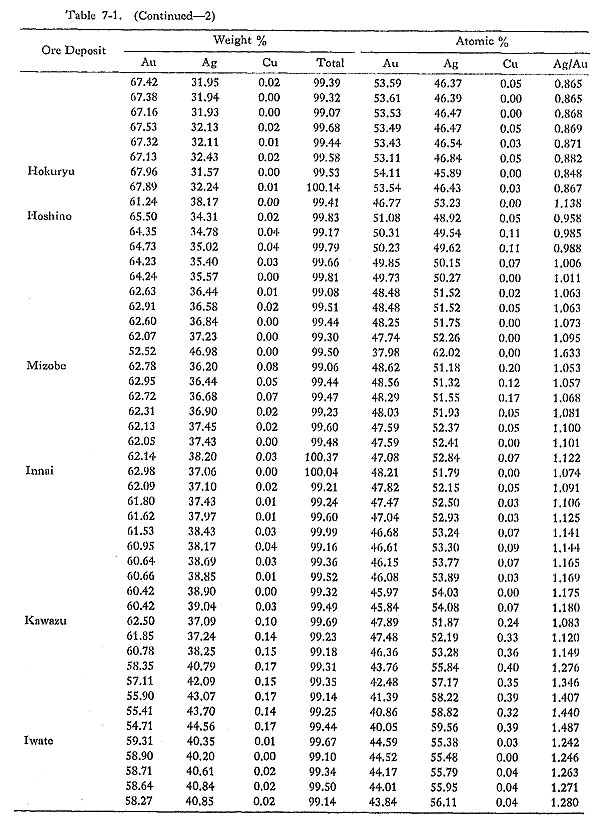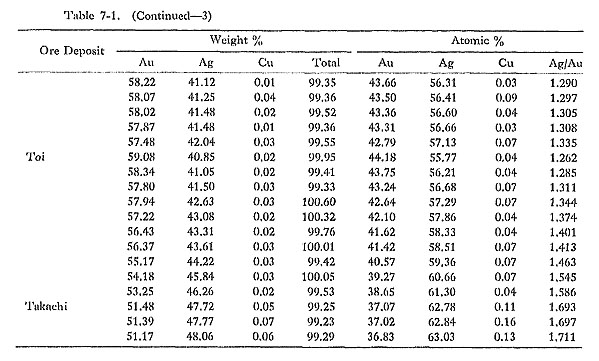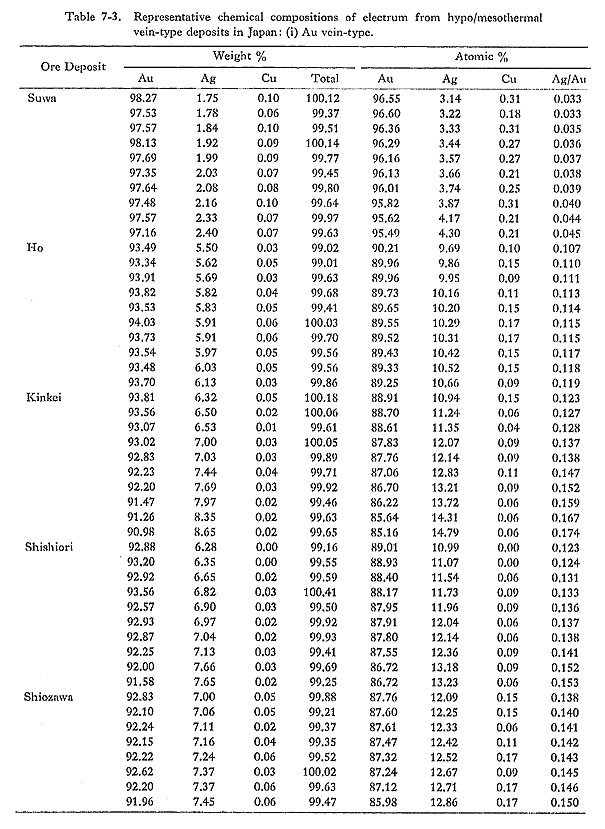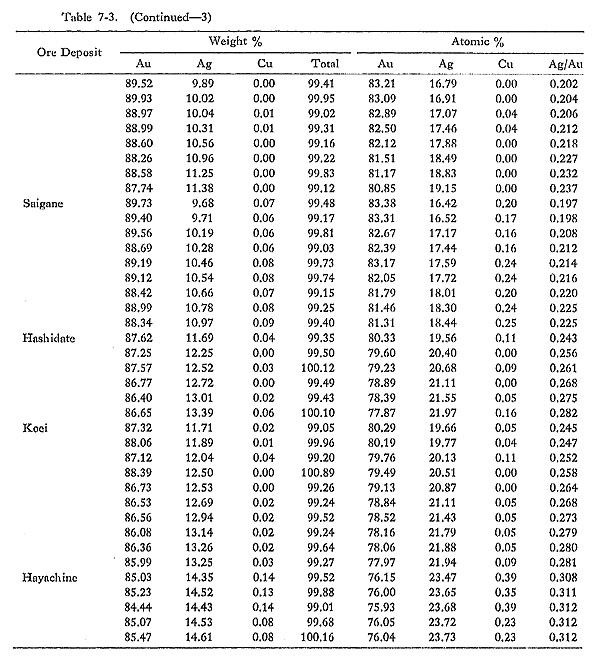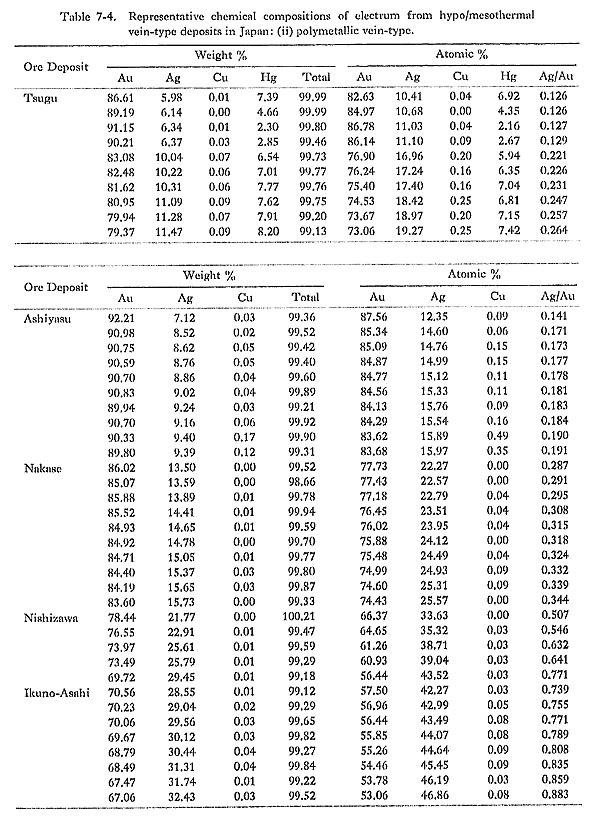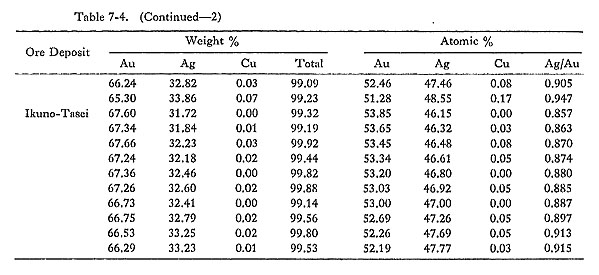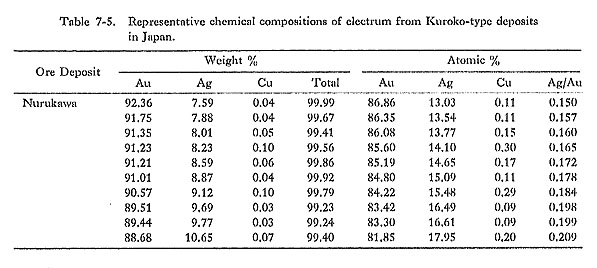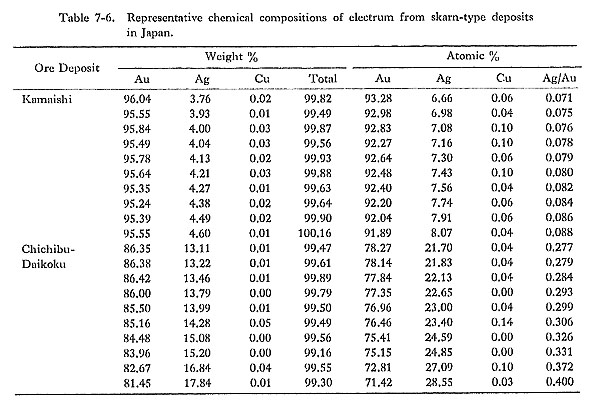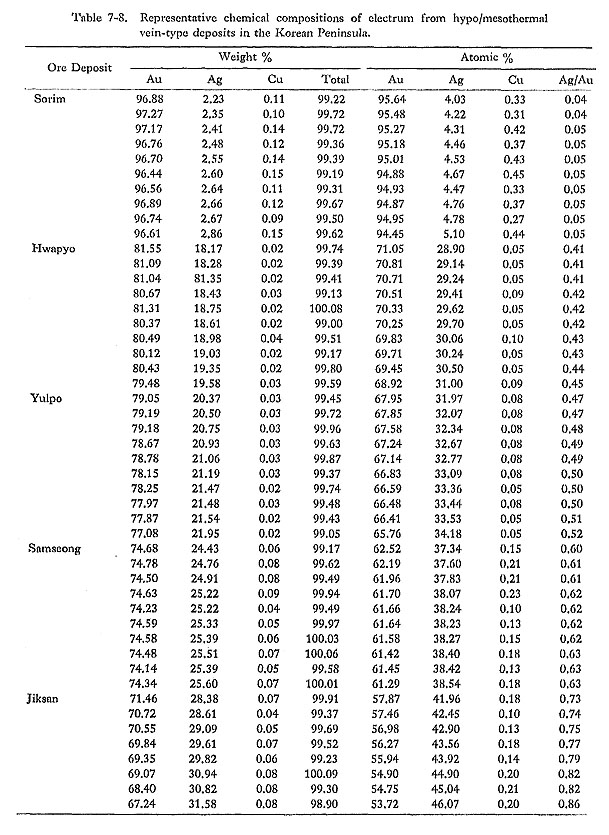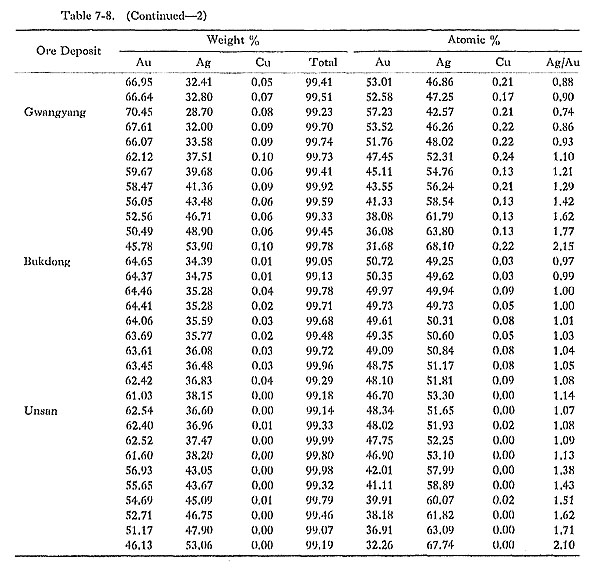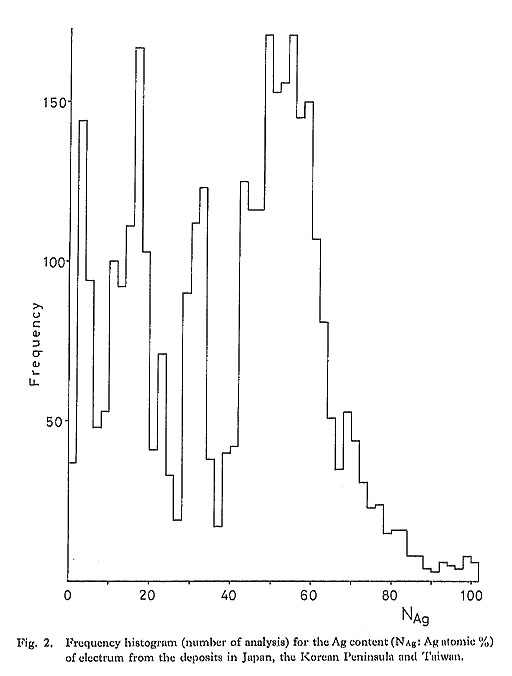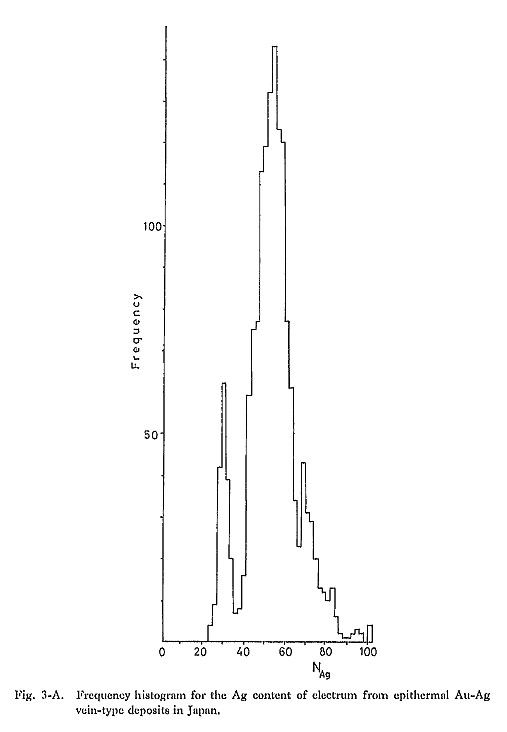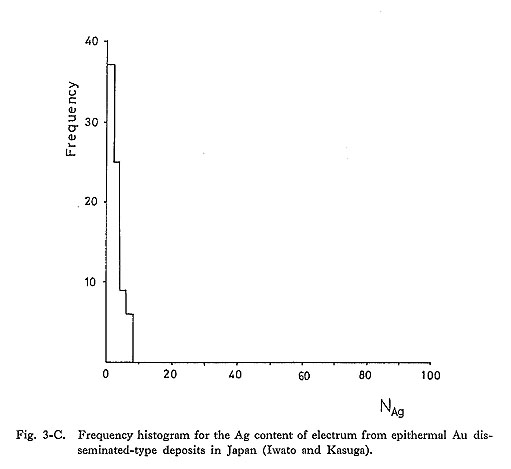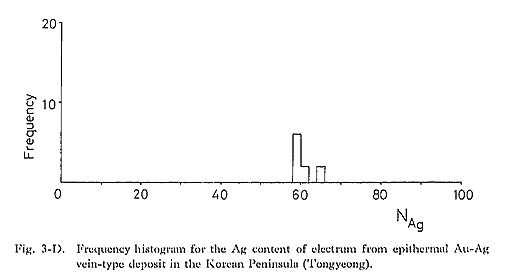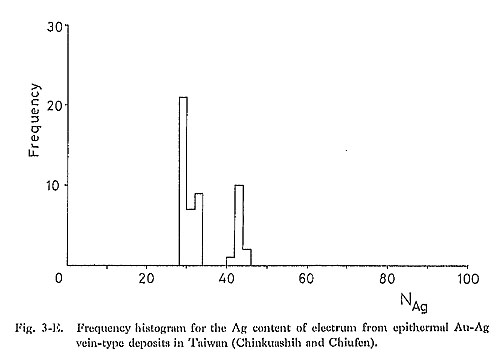CHAPTER IV
Chemical Composition of Electrum
| ( 1 / 2 ) |
|
A chemical analysis of electrum was carried out with an automatic electron microprobe analyzer (model JXA-733) connected to a computer performing a standard correction on line by the ZAF method of Ocean Research Institute, the University of Tokyo. The analytical conditions were as follows: accelerating voltage, 25 kV; counting time, 5 sec× 2; beam current, 2× 10-8 A on pure Au metal. The standards: pure gold metal for Au, pure silver metal for Ag, natural chalcopyrite for Cu, and HgS for Hg. Besides these elements, Fe, Bi, Sb, and Te have been analyzed but could not be detected. 1. Ag ContentThe Ag content (in atomic %) of electrum obtained by this study and from the literature is summarized in Fig. 2. The range of Ag content of electrum from each deposit is summarized in Table 6. Representative analytical data on electrum from each deposit obtained by this study and from the literature are summarized in Table 7. Figure 2 indicates that Ag/Au ratio of electrum ranges from almost pure Au to pure Ag. However, a great many data are plotted at Ag contents of 0, 10 to 20, 30, and 50 to 60 atomic %. As will be shown later, these contents correspond to type of ore deposits. For instance, electrum with 50 to 60 atomic % Ag content occurs in epithermal Au-Ag vein-type deposits.
Figure 3 indicates that the typical range of Ag content (in atomic %) for each type of Japanese deposit is diffurent: 4.7 to 89.4 (epithermal Au-Ag vein-type deposits); 8.6 to 99.9 (cpithennal base metal vein-type deposits); 0.2 to 6.7 (epithcrmal Au disaeminatcd-type deposits); 3.1 to 61.2 (hypo/mesothermal Au vein-type deposits); 10.4 to 83.0 (hypo/mesothermal polymetallie vein-type deposits); 4.7 to 89.4 (Kuroko-type deposits); 22.2 to 71.6 (bedded cupriferous iron sulfide-type deposits); and 6.7 to 91.7 (skarn-typc deposits). Epithermal Au-Ag vein-type deposits in JapanThe Ag content varies widely (Fig. 3-A). But the average Ag atomic % is 50 to 55. The Ag content of electrum from the deposits associated with Te mineralization (Chitosc, Fuke, and Takeno) is low, ranging from 26.0 to 40.6 atomic %. Native silver is rare, though it has been reported from the Omidani, Sanru, and Nebazawa deposits (Sano, 1974; Sugaki et al., 1982; Nakayama and Enjoji, 1985).
Epithermal base metal vein-type deposits in JapanVery few data on the chemical composition of electrum arc available. However, it is evident that the Ag content varies widely (Fig. 3-B). The Ag content of electrum from the Osarizawa and Okuyama Cu deposits is low (NAg=8.6 to 17.7). The Ag content of electrum from Pb-Zn-Mn deposits (Toyoha, Oe, Inakuraishi, Jokoku, and Imai-Ishizaki) is high (NAg=60 to 80). Motomura (1986) rcported that the Ag content of electrum from these deposits is higher than from epithermal Au-Ag vein-type deposits. Native silver is found in the Karuizawa Pb-Zn and Toyoha Pb-Zn-Ag deposits (Kojima et al., 1979).
Epithermal Au disseminated-type deposits in JapanData on the compositions of electrum from deposits of this type are available only from the Iwato and Kasuga deposits. The Ag content of these deposits is very low, from 0.0 to 5.3 (Fig. 3-C).
Epithermal Au-Ag vein-type deposits in the Korean PeninsulaThe Ag content of electrum from the Tongycong deposit ranges from 58.4 to 65.1 atomic % (Fig. 3-D). This range is similar to that for epithermal Au-Ag vein-type deposits in Japan.
Epithermal Au-Ag vein-type deposits in TaiwanThe Ag content ranges from 31.2 to 44.0 atomic % (Fig. 3-E). It is lower than that from epithermal Au-Ag vein-type deposits of Japan. Otagaki (1970) showed that the Te content in sulfides from the Chinkuaahih deposit is high. It is interesting to note that the Ag content of electrum from Te-bearing epithermal Au-Ag vein-type deposits in Japan (Chitose, Fuke, Takeno) is similar to that from the Chinkuashih deposit.
|
